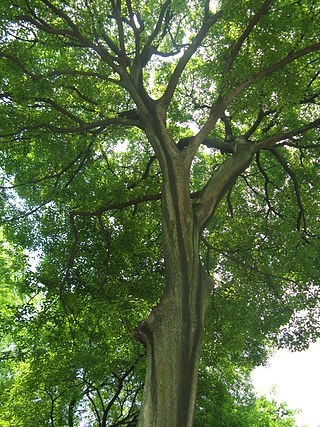Top Qs
Timeline
Chat
Perspective
Celtis sinensis
Species of tree From Wikipedia, the free encyclopedia
Remove ads
Celtis sinensis (English: Japanese hackberry,[2] Chinese hackberry; Chinese: 朴树; Japanese: 榎) is a species of flowering plant in the hemp family, Cannabaceae, that is native to slopes in East Asia.[3]
Remove ads
Description
It is a tree that grows to 20 m tall, with deciduous leaves and gray bark. The fruit is a globose drupe, 5–7(–8) mm in diameter. Flowering occurs in March–April, and fruiting in September–October,[3] in the Northern hemisphere.
Distribution, habitat and uses
Native to slopes at altitudes of 100–1,500 m (330–4,920 ft) in Anhui, Fujian, Gansu, Guangdong, Guizhou, Henan, Jiangsu, Jiangxi, Shandong, Zhejiang, Sichuan, as well as Korea (팽나무),[3] Japan and Taiwan. Leaves and bark are used in Korean medicine to treat menstruation and lung abscess.[4] It is a naturalized non-invasive species in North America. It is a declared noxious weed in many parts of eastern Australia,[5][2] where its seeds are spread by birds, fruit bats and water in riparian zones, roadsides, urban bushland, open woodlands, rainforest margins, waste areas, disturbed sites, parks and gardens, in sub-tropical and warm temperate regions.[5]
As an ornamental plant, it is used in classical East Asian garden design.
- Foliage and ripe fruit
- Kawahara Collection at Naturalis Biodiversity Center
- Celtis sinensis bonsai at the Parc floral de Paris
- Whole Tree near Lower Shing Mun Reservoir
- Spring Foliage at Shatin
- Boseong Jeonil-ri Hackberry Forest (Natural monument no. 480)
Remove ads
See also
References
Wikiwand - on
Seamless Wikipedia browsing. On steroids.
Remove ads







